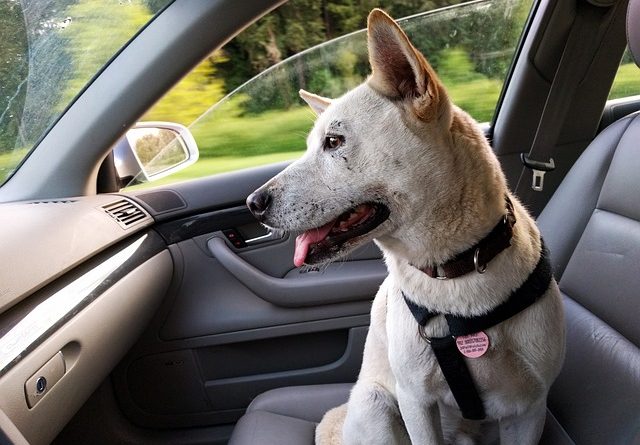How Can Pets Be Transported?
Careful planning and thoughtful consideration are essential when transporting pets, whether it’s within the country or overseas, to ensure their safety and well-being. Various methods are available, from air travel to road trips and beyond. Hence, we’ll provide some of the most common ways pets can be transported and the essential factors to consider for each method.
By Air: Ensuring Safe Air Travel for Pets
Air travel is one of the most common methods for transporting pets, especially for long-distance journeys such as going to Raleigh, North Carolina. Airlines typically offer specific guidelines and procedures for traveling with pets to ensure their safety and comfort during the flight. When moving pets to Raleigh via air travel, it’s crucial to consider:
- Check Airline Policies: Before booking a flight, it’s crucial to check the airline’s pet policies, including restrictions on pet size, breed, and the type of carrier allowed.
- Pet Carrier Requirements: Airlines often have specific requirements for pet carriers, such as size, material, and ventilation. It is essential to choose a carrier that meets these requirements and provides ample space for your pet to stand, turn around, and lie down comfortably.
- Health Certificates and Documentation: Depending on the destination, pets may require health certificates, vaccinations, and other documentation. To avoid any delays or complications, it’s essential to research and comply with the regulations of both the departure and arrival locations.
- In-Cabin vs. Cargo: Certain airlines permit small pets to accompany their owners in the cabin, whereas larger pets may be required to travel in the cargo hold. When deciding between in-cabin and cargo transport, consider your pet’s size, breed, and comfort level.
- Pre-flight Preparation: On the day of the flight, it’s essential to prepare your pet for travel by ensuring they are well-fed, hydrated, and have had a chance to exercise. Additionally, it’s a good idea to attach identification tags to your pet’s collar and provide them with familiar toys or blankets for comfort.
By Ground: Road Trips and Pet-Friendly Travel
Traveling by road offers pet owners more flexibility and control over their pet’s transportation experience. Whether embarking on a cross-country road trip or a short drive to the vet, here are some tips for transporting pets by ground:
- Secure Restraints: When traveling by car, securing your pet safely is essential to prevent accidents and injuries. Options include using pet seat belts, harnesses, or travel crates designed for cars.
- Comfort and Safety: Ensure your pet’s comfort and safety by providing them with a comfortable and well-ventilated space in the car. Avoid leaving pets unattended in a parked car, especially in hot or cold weather conditions.
- Frequent Breaks: Plan for regular breaks during long journeys to allow your pet to stretch its legs, relieve itself, and stay hydrated. Bring water, food, snacks, and any medications your pet may need.
- Pet-Friendly Accommodations: If your journey involves overnight stays, research pet-friendly accommodations to ensure a comfortable stay for you and your pet. Many hotels, motels, and rental properties welcome pets with prior arrangements.
- Emergency Preparedness: Bring a pet first-aid kit, your pet’s medical records, and veterinarian contact information along your route for unexpected situations.
By Sea: Navigating Pet-Friendly Maritime Travel
For pet owners considering sea travel, whether by boat or ferry, there are specific considerations to keep in mind to ensure an enjoyable experience for you and your pet:
- Research Pet Policies: Before embarking on a sea journey, research the pet policies of the ferry or cruise line you plan to use. Some companies may have restrictions on the size, breed, and number of pets allowed on board.
- Pet-Friendly Accommodations: If your sea journey involves overnight stays, look for pet-friendly accommodations on board the vessel and at your destination. Some ferries and cruise ships offer pet-friendly cabins or designated areas for pets and owners.
- Pet Safety on Board: Ensure your pet’s safety by keeping them securely confined in a carrier or designated pet area. Familiarize yourself with the ship’s layout and emergency procedures, including the location of pet-friendly evacuation routes.
- Pet Comfort and Well-being: Pack essential supplies for your pet, including food, water, bedding, and any medications they may need. Consider bringing familiar toys or blankets to help keep your pet calm and comfortable during the journey.
- Adaptation to Maritime Environment: Some pets may experience seasickness or anxiety when traveling by sea. Gradually acclimate your pet to the maritime environment by taking them on short boat rides or providing calming supplements recommended by your veterinarian.
Final Thoughts
Moving your pet requires careful planning and consideration to ensure their safety, comfort, and well-being. Pet owners should familiarize themselves with the particular requirements and guidelines for each mode of transportation—be it by air, land, or sea. By prioritizing their pet’s needs and working closely with transportation providers, pet owners can ensure a smooth and stress-free journey for themselves and their beloved companions.

